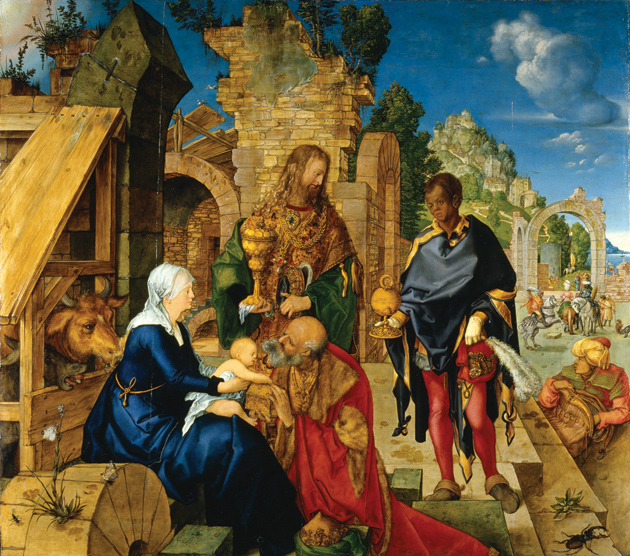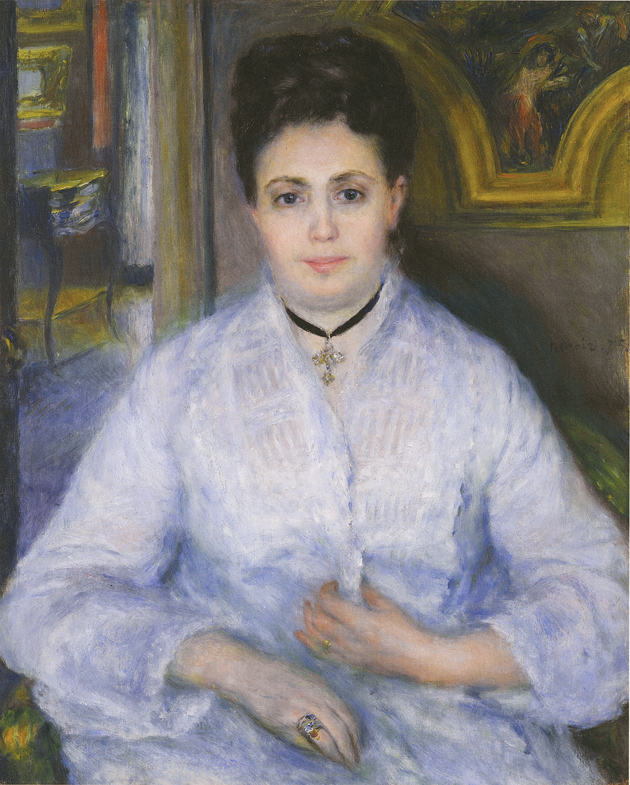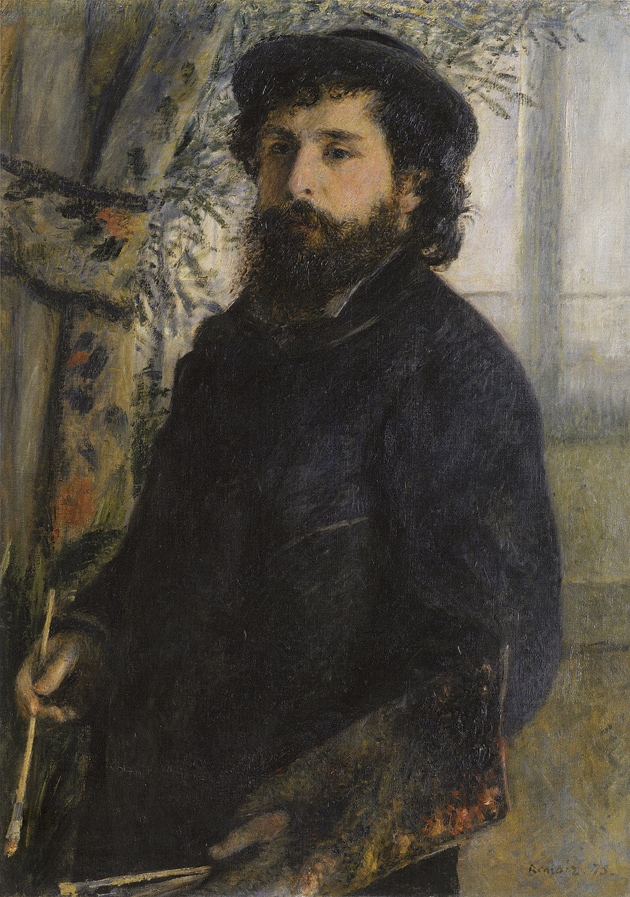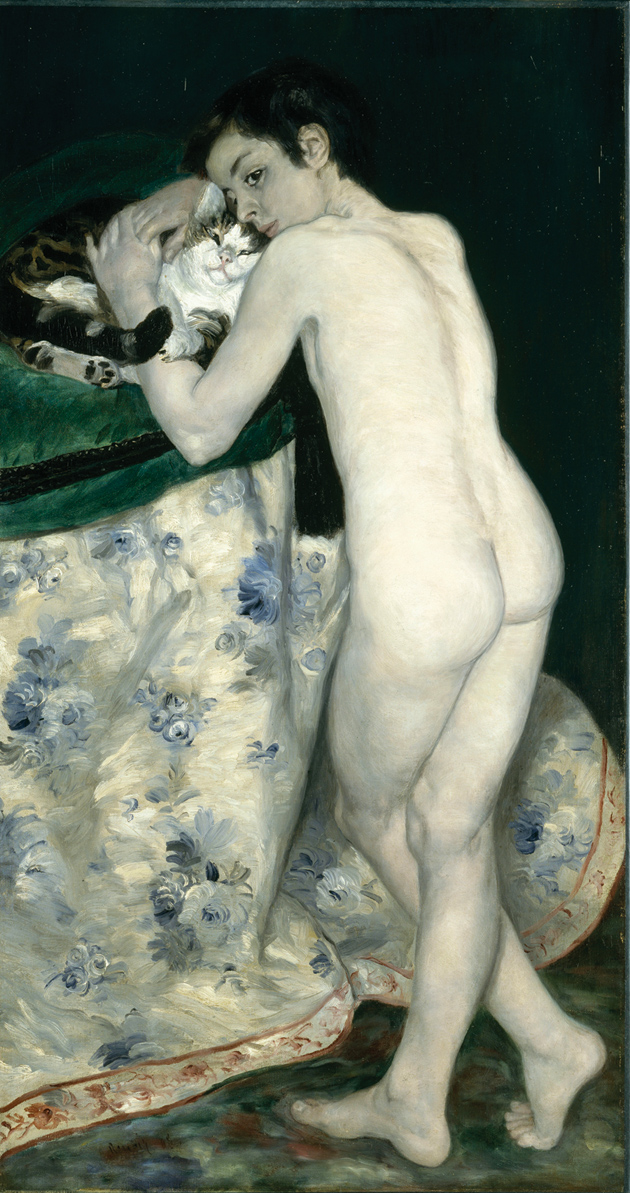Germany’s Greatest
The year was 1928. On the four hundredth anniversary of Albrecht Dürer’s death, the Germanisches Nationalmuseum in Nuremberg organized an impressive Dürer exhibition accompanied by a slim, softcover catalog of 124 pages. The information on the exhibited works was brief to the point of being laconic. The public response was tremendous. Three hundred and fifty thousand visitors made the pilgrimage to view the works of the artist celebrated as the embodiment of German classicism. The aged art historian Heinrich Wölfflin, reigning monarch of Dürer scholarship, arrived in Nuremberg and declared himself not completely satisfied. Thomas Mann put in a word of praise. Only one expert remained silent: Erwin Panofsky, professor at the University of Hamburg and a rising authority on Dürer. He contributed not a single word to the anniversary jubilation. It was not until 1943, during his exile in Princeton, that he demonstrated his reverence for Dürer in a warmly appreciative book, The Life and Art of Albrecht Dürer, that reads like a declaration of faith in a lost, better Germany.
1971 was another anniversary: Dürer’s five hundredth birthday. Nuremberg had lived through terrible events in the meantime: the Nazi Party rallies, the Nuremberg Laws, the Allied bombings, and the war crimes trials. The Germanisches Nationalmuseum again opened a splendid Dürer exhibition. This time the catalog was considerably more weighty at 471 lavishly illustrated pages. The show concentrated exclusively on the work of the master, celebrating him as a solitary genius. The introductory text ends with a grandiloquent flourish: “Dürer stands before us as a man of destiny, autonomous, with a mission to lead mankind to self-reflection through art.” This sentence embodies the spirit of the secular Dürer cult, now exaggerated by the moralizing pathos typical of postwar West Germany. It’s clear that a lot was expected of Dürer.
2012: once again, the Germanisches Museum has staged an ambitious Dürer exhibition, this time for a different kind of audience. On April 23, weeks before the opening, the newsmagazine Der Spiegel reported on—and, it must be said, vulgarized—the show, seeing it as a sensational event. But this time, there is no anniversary and no intention to celebrate the artist as a solitary genius. Dürer is now regarded in the light of historical scholarship that will not permit the great artist to be frozen into a monolithic monument, but instead investigates the circumstances and the people who facilitated his career.*
The catalog announces its aim: the basis and occasion of the exhibition and its new scholarly approach was a project subtitled “Historiographic Models for Broader Understanding of Dürer’s Early Work.” Thus the show is a reflection of innovations in research. This investigative impulse has given rise to an entire spectrum of enlightening observations and illuminating theories. Dürer no longer stands alone and self-contained, a lonely genius living in a narrow, provincial town. Instead, he appears as the eager partner of an elite gaining influence in Nuremberg around 1500: merchants, printers, and humanists with contacts throughout Europe. Not surprisingly, at the heart of this show is the desire to bring Dürer back home to Nuremberg. The more globalization dissolves long-established relationships, the more intense becomes interest in local history and traditions.
There is something questionable about the exhibition’s title, however: “The Early Dürer.” There was a time when art historians were almost giddy about discovering unknown early works by the old masters—“early Giotto,” “early Rembrandt”—sweet tidbits in the search for the roots of genius in its youth. But that approach conflicts with the concerns of this show to demonstrate the connections surrounding Dürer’s origins. Above all, it raises a question whose answer is purely a matter of taste: How long was Dürer “early”? The show’s answer is: until 1505. But by that time, the master had completed the Apocalypse, parts of the Great Passion and the Life of Mary, and other major works. Are they all “early”? Such a judgment recalls the ironic question an American colleague once asked me, “How long does the next generation actually last in your country?” The title cannot detract from the show itself, but the public deserves a less confusing designation.
The six-hundred-page catalog contains an astonishing twenty-one essays that all bravely chip away at the traditional image of Dürer. Research into the setting in which he worked addresses neglected questions such as: Where did Dürer live before buying his own house in Nuremberg in 1504? The exhaustively documented essay on “the physical environment of the early Dürer” provides some answers.
Dürer’s father, a herkomling (immigrant) from Hungary and a highly respected goldsmith, lived at 27 Burgstrasse. His next-door neighbor was Dürer’s teacher Michael Wolgemut. The painter’s most important patrons—the Tuchers, Hallers, Baumgartners—also lived nearby. Dürer’s godfather was Anton Koberger, an internationally renowned printer who published Hartmann Schedel’s Weltchronik in 1496. Both Koberger and Schedel lived in the same street as well. Finally, another neighbor and close friend was the humanist Willibald Pirckheimer. It would be wrong to dismiss such findings as trifles. Their effect is to deflate the sentimental cliché of the solitary genius and show what an artistically and commercially cosmopolitan environment the ambitious early Dürer lived in.
Advertisement
The essays aim to rescue the work of the early Dürer from oversimplified biographical interpretations and replace them with an informed understanding of his social connections. An example is Jörg Robert’s venturesome essay with the Nietzschean title “Dürer, Celtis and the Birth of Landscape Painting from the Spirit of the ‘Germania illustrata.’” The collaboration between Dürer and the arch-humanist Conrad Celtis, who had been crowned Poeta laureatus in the Nuremberg castle in 1487, is well known. But Robert discovers new depths to their work together. He connects Dürer’s watercolor landscapes from the 1490s to Celtis’s project of a Germania illustrata that would rebut the harsh description in Tacitus’s Germania. In Robert’s reading the landscapes, previously celebrated as proto-Romantic experiences of nature, instead prove to be topographic documents, reconnaissance along the linguistic border between German and Italian in the South Tyrol.
Of even greater consequence is the connection between Celtis and the famous Dürer self-portrait of 1500, about whose Christ-like appearance gallons of art historical ink have been spilled. In one of his Latin epigrams dedicated to Dürer, the humanist hails the master: “Albrecht, illustrious painter in German lands, [particularly] where Nuremberg raises its high head to the heavens. You are to us a second Phidias and a second Apelles.” The humanist message of the self-portrait would accordingly be not so much pious as narcissistically vain: Albrecht Dürer Noricus—i.e., the Nuremberger—as the second, German, Apelles. From this point of view, the desire of today’s Nurembergers to have the portrait of their Apelles to themselves again for a little while is a touching example of hometown pride.
The show is built upon the foundation laid by the essays. The works, especially the prints, stand out sharply against their black or red backgrounds. The division into sections is insightful, although their titles are sometimes pretentious. Between the separate galleries there are areas where one can pause and reflect; the purpose of a Dürer exhibition is less enjoyment than understanding.
In the first room the visitor finds family portraits: silverpoint self-portraits of father and son, painted likenesses of the nineteen-year-old’s father and mother. The portraits are surrounded by other artifacts of these lives: the book published as a memorial to Dürer and praise for the artist from the humanists Celtis and Wimpfeling. The moving portrait of the aged Wolgemut, painted in 1516 when Dürer had already become famous, testifies to Dürer’s reverential piety. There are constant reminders of the environment in which Dürer’s genius developed.
The portraits are followed by possible precursors in the next room: altar panels by Hans Pleydenwurff, Wolgemut, and others, mostly in loud colors and with clumsy gestures. Nothing here anticipates the painstaking vividness, the fineness of line, or the exuberance of the young Dürer. The background landscapes may have influenced the young painter in his motifs, but not in his artistry. Martin Schongauer is a different story. A comparison of the Colmar master’s Madonna and Child in the Courtyard with Dürer’s enchanting Holy Family with the Dragonfly shows them to be coequals. Then Italy comes into view. Northern Italian tarot cards with figures from antiquity were common in Nuremberg. But what a difference there is between Wolgemut’s woodcut after an Italian Calliope—a touchingly awkward piece of late-Gothic work—and Dürer’s copy of it, full of musical grace. Nearby one sees Dürer’s magnificent drawing after a bacchanal by Mantegna, a beacon of Renaissance art in Germany.
One entire section of the show is devoted to Dürer’s “Italian Madonnas.” An outstanding example is the Haller Madonna on loan from Washington. In the head-on half-figure presentation and the strong blues and reds we see reflections of Venetians like Giovanni Bellini. But in place of Italian serenity, there is a tense seriousness, a more zealous piety. On the reverse side of the panel is Lot’s flight from the burning Gomorrah. Is the Virgin being called upon as protectress from threatening catastrophe, as Dürer had just portrayed her in the Apocalypse? And one should not overlook a small Maria Lactans, a private devotional picture of exquisite coloristic charm and a serene cheerfulness Dürer hardly ever indulged in.
Advertisement
One of the pleasant surprises in the exhibition is the assembly of Dürer’s portraits of the Tucher family. We find well-done portraits by Wolgemut, but when Dürer raises the series to a new level in 1499 with his portrait of Elsbeth Tucher, it is like a sudden awakening. The head and shoulders of a proud and self-confident woman stand out against a landscape and a damask-covered wall. Next to it we see portraits painted on canvas such as The Fürlegerin with Braided Hair, a work of demure beauty. Dürer does not flatter his sitters. Farther along there are expressive physiognomies among the male heads that were probably cut from one of his larger paintings on canvas. Among the works on canvas is also the strange picture Hercules and the Stymphalian Birds that may have hung in a room of Pirckheimer’s house. It is one of the subjects from antiquity that Dürer, the new Apelles but himself ignorant of classical languages, dreamed up in collaboration with the Nuremberg humanists. It is closely related to the statuesque Hercules at the Crossroads from nearly the same time.
Dürer’s painstaking, questing, tireless creativity reaches out in all directions. He floods the market with woodcut series such as the Apocalypse, marvelous engravings like The Sea Monster, cartoons for stained-glass artists, designs for goldsmiths. Nothing seems to come easily to him, but to everything he devotes the most exacting care. There are examples of all these genres to be seen in Nuremberg.
Two groups of works deserve special mention. Dürer did not produce many altarpieces. Unlike his late-Gothic predecessors, he was not a purveyor of ecclesiastical pictures. The crown jewel of the Nuremberg show, however, is the panel with the Adoration of the Magi that may have been in Wittenberg (see illustration on page 53). Before the backdrop of a multipartite ruin with arches and stairways gleams the blue-clad figure of Mary along with the Wise Men holding their golden vessels and wearing costly robes. This picture must put to rest any reservations about Dürer as a painter. The trained goldsmith, the Apelles of graphic art, here performs a miracle of painting. A stag beetle crawls along the step at bottom right; at the top a mighty mountain crowns the picture with crags, towers, and walls. One could gaze at this picture forever.
On the other hand, the Jabach Altarpiece—only fragments of which remain—evokes the transience of earthly riches. While minstrels continue to play on the right, Job sits on the left: naked, befallen by ill fortune, bowed in acquiescence to God. The panel is not well preserved, but the lackluster quality of the painting may have been intentional, chosen by Dürer as the appropriate medium for Job’s distress. We do not know who commissioned this altarpiece—perhaps a Nuremberg merchant who mistrusted his fortune. Almost at the same time, Dürer produced the copper engraving of Good Fortune showing Fortuna floating above the earth far below.
The artist’s watercolors and drawings of cities were all made before 1505 and are therefore richly represented in the show. We know today that the studies from nature were not done directly but composed in the studio on the basis of lost preliminary drawings. There are close-up drawings of rocks with cracks and fissures that then reappear in representations of hermits. Most astonishing are the panoramic views of Innsbruck and Trento or closer to home, the watercolors of the Willow Mill and the Pond in the Forest. The sky above Trento is almost hazy. Innsbruck is reflected in the water of the Inn. A sunset glows above the willow mill. Whatever the forerunners of these unprecedented pictures may have been, it was Dürer alone who wrested them from nature.
These days, older art has a hard time in the midst of the flood of new images. This is especially true of Dürer because his pictures demand patience and don’t yield their essence to an eye accustomed to channel-surfing. Let us hope that this courageous exhibition will attract observant, thoughtful visitors to Nuremberg, grateful admirers of the German Apelles.
Renoir Between Two Worlds
“When I think that I might have been born into a family of intellectuals! It would have taken me years to get rid of all their ideas and see things as they are.” Auguste Renoir’s son, the filmmaker Jean Renoir, relates the painter’s sigh of relief in his 1962 memoir Renoir, My Father—not that we can take everything in that emotional tribute as the unvarnished truth. By 1962, the director’s father had been dead for over forty years and was long since a legendary figure: the hedonistic artist, fated to be the Titian or Rubens of the Belle Époque. His plump, rosy nudes conjured up an Arcadia of sensual delight far removed from the hell of sexual exploitation in the maisons closes depicted by his contemporaries Degas and Toulouse-Lautrec.
No, Renoir’s work always seemed the dream of an “earthly paradise,” as the critic Werner Hofmann put it. He painted the rich and famous not in their gray or black street clothes but in opalescent colors: the banker Cahen d’Anvers, Richard Wagner, whom he sought out in Palermo, and the actress Tilla Durieux, whose portrait radiates with the splendor of the eighteenth century. The dream of bliss in the dixhuitième, the age of festive gallantry described by the Goncourt brothers, was one of the illusions of the waning Second Empire and the incipient Third Republic. No other Impressionist painter served that dream more faithfully than Renoir—the sweet fiction that despite all the economic, political, and social turmoil then shaking France, one was living in a world of liberated sensuality, a postmythological Arcadia.
But our altered and disenchanted view of the nineteenth century has interpreted Impressionism as a historical phase and long ago assigned it a place in the social archaeology of the bourgeois era. Gone is the innocent secessionist dream of the “painters of modern life,” the programmatic heroism of the refusés who rejected the recognition that came with exhibiting work in the Salon. Nor is our image of Renoir any longer the rosy one of artistic legend. His biography has become more contradictory, undermined by episodes long left unmentioned. That is the starting point for a meticulous but modest exhibition (comprising a total of some fifty pictures) at the Kunstmuseum Basel. It shows us Renoir’s work before his “Arcadian turn,” that is, from the years before his social and commercial success. The earliest paintings are from the 1860s, when he was still finding his way in company with Bazille, Monet, and Sisley, with whom he for a while shared a studio and enjoyed the pleasures of the suburbs along the Seine with their water sports and relaxed atmosphere.
Renoir’s family came from the pre-industrial France profonde, that bygone world described by Balzac in his Scènes de la vie de province. Auguste was born in Limoges in 1841, the town of enamels and faience. The family’s circumstances were extremely modest. His father was a tailor and his mother a seamstress, and slumbering childhood memories of this connection to the garment trade may have been awakened when the painter came to depict Lise Tréhot, his model and lover, in a variety of different guises. When Auguste was four years old, the family moved to the capital. Their meager income precluded the boy’s attendance at one of the great academic lycées, but as his later comment about intellectuals shows, he never regretted that fact.
Renoir arrived at painting by way of the decorative arts. At thirteen he was apprenticed to a porcelain painter whose studio produced vases adorned with gallant motifs from the eighteenth century—Watteau’s Embarkation for Cythera, for example, or Boucher’s Diana Resting After the Bath. We have no documentary evidence, but it is tempting to think that Renoir’s admiration for the dix-huitième was already kindled during this apprenticeship. And something of the luster of painted porcelain still gleams from his late Arcadian canvases.
Shortly after 1860, the market for painted porcelain collapsed and the young Renoir had to find another way to earn his bread. He began to paint decorations on fans, cabinets, and doors. He also worked for a manufacturer of net curtains that he adorned with motifs from church windows. One cannot imagine Manet or Cézanne taking such a detour. Yet even in old age, Renoir unabashedly declared, “Pictures are painted to decorate walls.” In some sense, the promise of sensual bliss in his oeuvre has an essential connection to the delights of bourgeois interior decor.
At the Basel show one wanders back and forth before the works of an ambitious and talented young painter still getting his footing in the vibrant Paris art scene between 1864 and 1879. He looks back to Narcisse Diaz, is impressed by Courbet, and has before his mind’s eye the works of his friend Manet, the true initiator of Impressionism. He works in many different genres and themes: portraits, landscapes, still lifes, but also scenes of modern life. And then he also paints in different roles and costumes Lise Tréhot, the model who bore him two children and whose existence he would later conceal.
One can see in Basel an early picture that is probably his most beautiful still life. It is a view into a greenhouse with blossoming flowers of every possible color; clearly the decorative craftsman has become an artist. The other still lifes on exhibit do not come up to the standard of this one. A small picture of figs and currants from 1870–1872 is a response to Manet’s natures mortes, but in Renoir’s distinct streaky brushwork. Renoir the seeker gropes his way forward among his fellows and competitors, at times daringly and always with his own coloration.
A series of portraits begins in 1864 with a somewhat stiff picture of a woman whose bluntly rounded contours are warmed by a slumbering sensuality. One is tempted to say that the Renoir of the rosy nudes stands in the wings. You can measure his artistic and social rise by comparing the 1864 portrait to the one he painted eleven years later of Mme Choquet, the wife of Cézanne’s famous patron. Now he chooses lighter colors—a white tinged with violet for her dress—and captures the shining eyes and the bloom of the flesh tones. He has become the most sensuous of the Impressionist portraitists.
His most beautiful portraits are of his painter friends. They begin with an 1864 likeness of Alfred Sisley in which the cultivated English bourgeois melds into the dandy. There is a surprising canvas of 1867 showing Frédéric Bazille in delicate colors and full figure, sitting bent before an easel and working on his still life with a heron. This is no academic pose: we are granted a peek at a charmingly awkward artist absorbed in his work. 1874 was the annus mirabilis in which the Impressionists met in Argenteuil and painted one another’s portraits. Renoir painted Monet twice: once in 1873, smoking his pipe and reading L’Événement (a journal well disposed toward the refusés), and again in 1875, this time in three-quarter figure holding his palette and brush. They are pictures with a natural warmth and enchanting intimacy probably only achievable by an artist with such a confident outlook as Renoir.
But Renoir also had a strong desire for worldly success and for that, he had to make compromises with the grande bourgeoisie. In 1871 he paints the portrait of a mustachioed officer and makes the silver braid and buttons of his uniform sparkle as he once did the painted decorations on cabinetry and drapery. To the Salon of 1873 he submits an enormous canvas on which a bourgeois Amazon and her mount prance through the Bois de Boulogne on their morning ride. It is a self-conscious attempt to rise to the themes that preoccupied Degas and Manet. The woman in black riding habit and top hat was the wealthy wife of a general’s aide-de-camp and the ambitious painting has a chilling rigidity about it that is positively military. For all that, what is at issue in this androgynous experiment is the image of woman in contemporary painting. This brings us to the most engaging part of the exhibit, the role-playing in which the painter indulged with Lise Tréhot.
Renoir met Lise in 1864, at the home of a friend. She would be his model and mistress for an entire decade. In a photograph of that year, we see a plump woman with a broad, sensual face and turned-up nose, an animalistic type that recurs in Renoir’s pictures right into his late period. The contrast to the cool reserve of Manet’s famous model Victorine Meurent could not be more pronounced. Renoir painted Lise in constantly varied costumes: in a summer dress of mousseline holding a bouquet of flowers or a parasol; as a fashionable Parisienne in an elegantly tailored dress and little hat in the shape of a dove, engaged in obscene finger play with a parrot in a stuffy interior filled with potted plants; then in slatternly summer dishabille with her open black hair spilling over bare shoulders; even as a nymph, her fleshy body lies somewhat stodgily beside a stream.
After immersing itself in mythology, the painting of modern life seeks a new location for woman. One sees it in Manet: from the Olympia to the Bar aux Folies-Bergère. But what in Manet is the result of deep reflection on art history, in Renoir springs from a desire for naive sensuality. Only after his break with Lise Tréhot do Renoir’s women appear on the stage of contemporary Parisian life, as in Café concert of 1876; and one of the last paintings in the exhibit, La baigneuse, shows only a voluptuous nude. At last Renoir had found his theme. In a poetic passage in In Search of Lost Time Proust wrote, “Women pass in the street, different from those we used to see, because they are Renoirs.”
-
*
Currently, the Metropolitan Museum in New York is presenting an exhibition, “Dürer and Beyond: Central European Drawings in the Metropolitan Museum of Art, 1400–1700,” which ends on September 3. ↩







